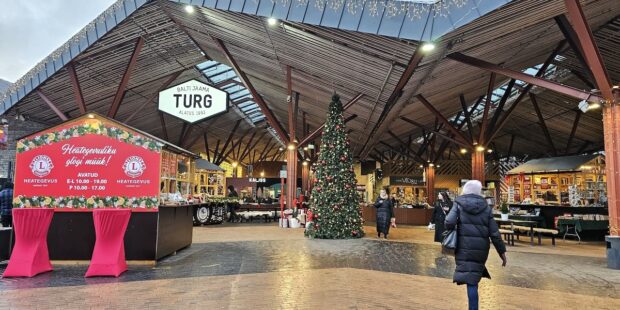Estonian winter craft beer test
Text Mikko Savikko Photos Andrei Chertkov
 Winter beers are perfect for the coldest season.
Winter beers are perfect for the coldest season.
Estonian beer production is almost entirely under the control of the large breweries A. Le Coq and Saku. Their market share in 2021 being a colossal 97.3 per cent.
The share of small breweries was only 2.7 per cent, a decrease compared to the previous year. Small breweries produced around 3.7 million litres of beer in 2022. During the corona pandemic, a few small breweries even stopped operating. According to a rough estimate, the largest microbrewery Põhjala produces about 20 per cent of the entire market share of microbreweries.
The microbrewery boom started in Estonia around 2014–2015, when IPA beers in particular emerged, whose bitterness numbers (IBU or EBU) were discussed with great seriousness. While, for example, A. Le Coq Premium has 15 IBU points of bitterness, even the 50 IBU points of Põhjala’s Virmalised beer was too low. according to the new critics.
Most of Estonia’s small breweries can be called craft breweries, because many of them have only a couple of employees and the production is limited to a few tens of thousands of litres per year.
Winter beers from small breweries were tested
Beers from small Estonian breweries with a low bitterness value were selected for the test. The goal being to find suitable alternatives for the average beer lover.
The Baltic Guide organised a beer test in Tallinn’s old town, at Lai 8. There is both a beer shop (õllepood) and a bar called Koht. On the day of the test, the store had 745 different beers in its selection. With the professional assistance of the staff, Estonian products suitable for winter consumption were selected for the test.
The test was carried out by the Tallinn Õllekomando strike group, one of Finland’s largest beer clubs. The goal of Õllekomando, which is open to all interested parties, is to deepen the knowledge of Tallinn and its bar life. One of the hallmarks of its activity is the principle: life is found in the margins. This time it was found in microbrewery beers.
In the test, the appearance, smell, texture, taste and aftertaste of the products were evaluated separately. All sub-areas were given points from one to five. Testing beer is different from tasting wine because the aftertaste of beer is only created after the drink has been swallowed.
Good beer has a balanced taste. For some, the strong bitterness mentioned above masks many of the beer’s other fine flavours.
The result of the total points obtained in the test was quite even for all testers. KUUU, which came in first, got unanimous high marks from everyone. The smoky beer’s manufacturer is a small brewery in Viljandi named Vaadimees, which has been operating for less than two years.
The beers differed from each other, but all were well-suited as winter drinks. The evaluators stated their warming effect. Sumin Honey Tripel, which came in the top three, was the strongest, but its alcohol content was not felt in the taste. The pumpkin beer Linda could be matched well with warm food.
For some, the choice of beer can also be related to music, so you can drink Metsatöll beer, especially while listening to ethno-metal music. Metsatöll is also the name of a very popular Estonian heavy metal band.
The Baltic Guide Winter Beer test results

Information and types of beers in the test:
- Werner, Viennese lager, 4.5%, Pühaste Brewery (seasonal)
- Linda, pumpkin beer, 6.5%, Toht Brewery, seasonal product
- Kohalik Laager Dark Edition, 4.8%, Munich dunkel. Käbliku Pruulikoda
- Sumin Honey Tripel, 9.5%, Belgian tripel, Pruulikoda Kolk
- KUUU, 6.5%, smoke bock, Viljandi Vaadimees
- Metsatöll, 7.9%, Baltic porter, Purtse Pruulikoda
To learn more about this and similar topicsCraft Beer Estonian Beer Estonian Craft Beer Estonian Microbreweries Microbrewery Vaadimees Winter Beer Winter Beers









